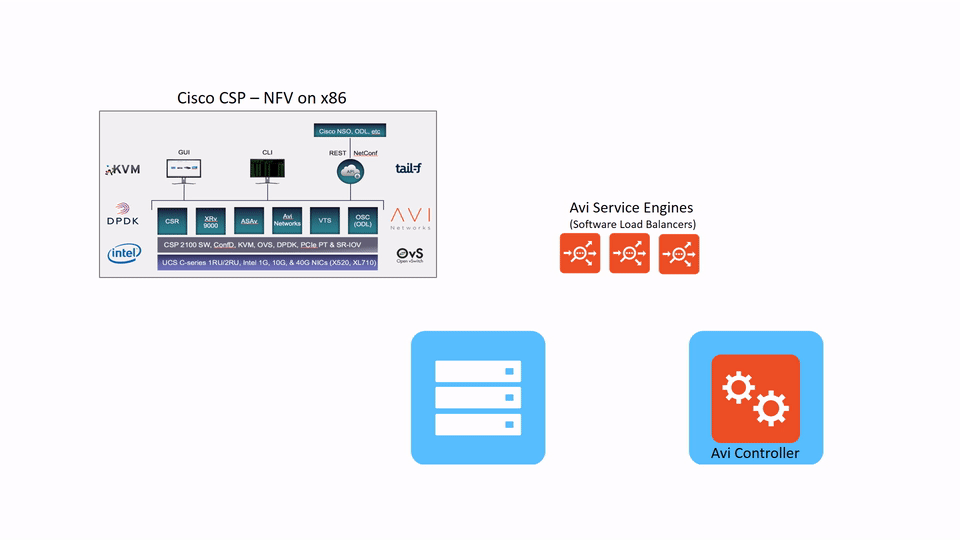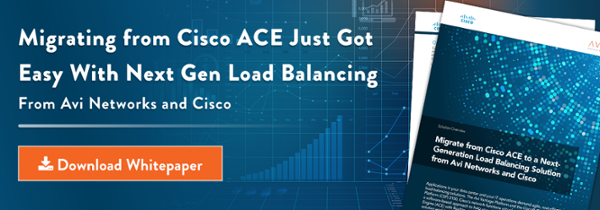As of January 2014, Cisco has stopped production of ACE load balancers and exited the application delivery market. Cisco is no longer supporting software on Cisco ACE and soon will no longer support the hardware. It is recommended that all enterprises running Cisco ACE make the transition as soon as possible.
In the past, enterprises using Cisco ACE had few other choices than to switch to another hardware-based load balancer from a different vendor. However, appliance-based load balancers are becoming obsolete in the face of changes in the modern application landscape. Enterprises now need to deploy a combination of cloud-native applications built on microservices architectures, hybrid cloud applications, as well as traditional applications. Legacy architectures and appliance-based load balancers simply do not have the flexibility to scale in a cost-effective manner or to handle these modern application architectures.
Avi Networks has partnered with Cisco to provide a software-defined solution for a Cisco ACE replacement that is elastic, and analytics-driven, delivering high-performance application services including load balancing that can be deployed on standard intel architecture. This solution provides enterprises with an approach that is highly-automated and can cut TCO in half.
Common Challenges
Many modern enterprises have been successful in using webscale technologies to optimize and automate their computing infrastructures. Using standard x86 servers, these environments can manage infrastructure and enable seamless scaling by dynamically adding compute resources.
However, load balancing and application services is a different story. Most enterprises have had no choice but to use inflexible hardware ADCs or low performing virtual appliances. The problem here is that these appliances are often overprovisioned—which leads to overspending in order to achieve the performance and availability that is necessary.
Common challenges encountered by enterprises using appliance-based load balancers include:
-
The need to manage each load balancer; managing multiple appliances separately can be inefficient and is not scalable as more applications and tenants are added.
-
Overprovisioning and overspending without elastic scalability.
-
Lack of visibility to the network context needed to resolve application issues.
-
Inability to adjust server load based on traffic without manual intervention
Cisco CSP 2100 and Avi Networks
Together, the Cisco CSP 2100 NFV appliance and the Avi Vantage Platform provide a turnkey load balancing solution on an elastic NFV platform, without any additional expertise being needed. The central management of this platform gives administrators the ability to roll out elastic load balancing and application performance monitoring capabilities efficiently. With just a single Cisco CSP appliance to support tens of Gbps of throughput and several million concurrent connections, performance is not a concern for network functions. In fact, this system has the ability to scale seamlessly to several terabits per second of throughput, and millions of SSL TPS as a single load balancing fabric.
Take the Next Step
Global 2000 enterprises across all industry verticals have taken advantage of the turnkey capabilities of the Cisco CSP and Avi Vantage solution with substantial savings - over 50% compared to traditional load balancing solutions - to replace their Cisco ACE appliances.
Contact Avi Networks or Cisco sales for a custom demo of the joint solution and a quote.



